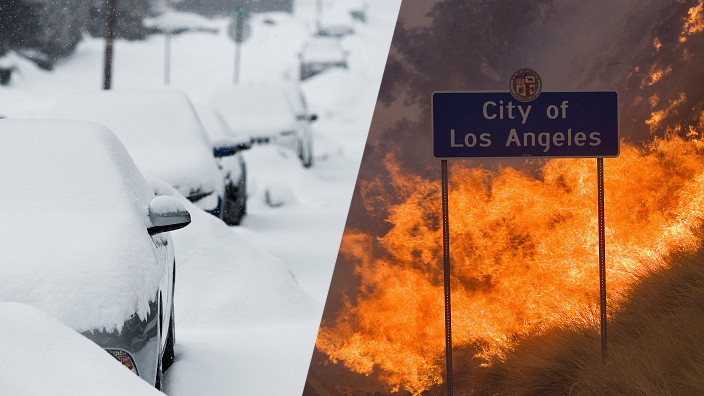
Austin and Camilla Boles were excited when they woke up to snow blanketing the streets of their neighborhood in Katy, Texas. The power had gone out sometime during the night, but state officials said any rolling blackouts would only be temporary, so they weren't concerned; they simply turned on their gas fireplace and spent the day sledding and playing games with their young children.
But as the sun began to set, the power had still not returned, and they started to worry. The Boles' home is heated by natural gas, but the furnace is controlled by an electric thermostat: without electricity, the furnace was unusable. The temperature inside their house dropped lower and lower, and soon the family all huddled around their small fireplace for warmth.
"We put the boys by the fire in their sleeping bags for the night and tried to sleep in our room, and it was really miserable," Camilla explained. "The next morning was even colder in the house; it got down to 5 degrees, maybe even colder."
When the snow stopped and outdoor temperatures slowly increased, a pipe in their attic burst in five places, flooding the garage. Austin spent hours fixing the broken pipe and helping neighbors whose lines had also burst.
"[I]n Texas, insulation to keep the cold in is what you worry about," he told me. "I didn't really think about putting insulation on a pipe to keep it from freezing."
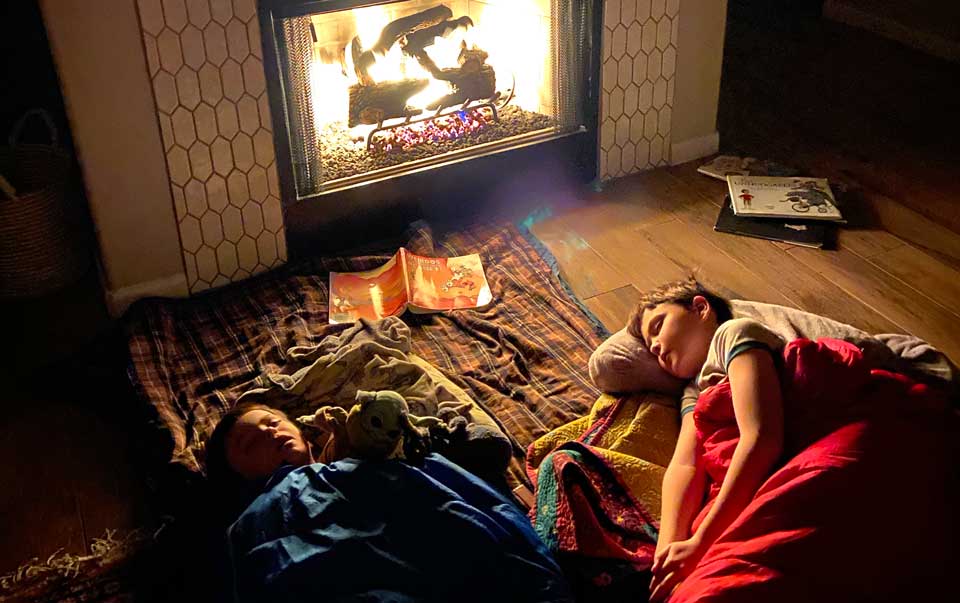
Millions of people in Texas had similar experiences. The winter 2021 storms battered states throughout the central and southern regions of the US, but the energy crisis in Texas was unique. While the state is rich in oil and natural gas, freezing temperatures and blizzard conditions took much of its petroleum production offline. Coal piles froze, water intakes that cool generators iced over, and oil and gas supply pipelines malfunctioned. Even renewable energy sources like wind turbines and solar panels were thrown offline.
According to ERCOT, the public organization that operates Texas' power grid, extreme weather took down 48.6% of the state's generation capacity. And as capacity dropped, demand for electricity, which is normally highest in the hot summer months, skyrocketed, leaving the grid dangerously unbalanced.
Unlike most other US states, Texas operates its own independent electrical grid with minimal connection to the broader national system, so officials couldn't utilize excess generating capacity in other regions. As the grid careened toward a disastrous system-wide outage, regulators were forced to completely shut off power throughout the state. ERCOT officials later said the grid was minutes away from a total, catastrophic failure that could have left much of the state without power for weeks. Ultimately, Texas' energy infrastructure failed at every point in the system.
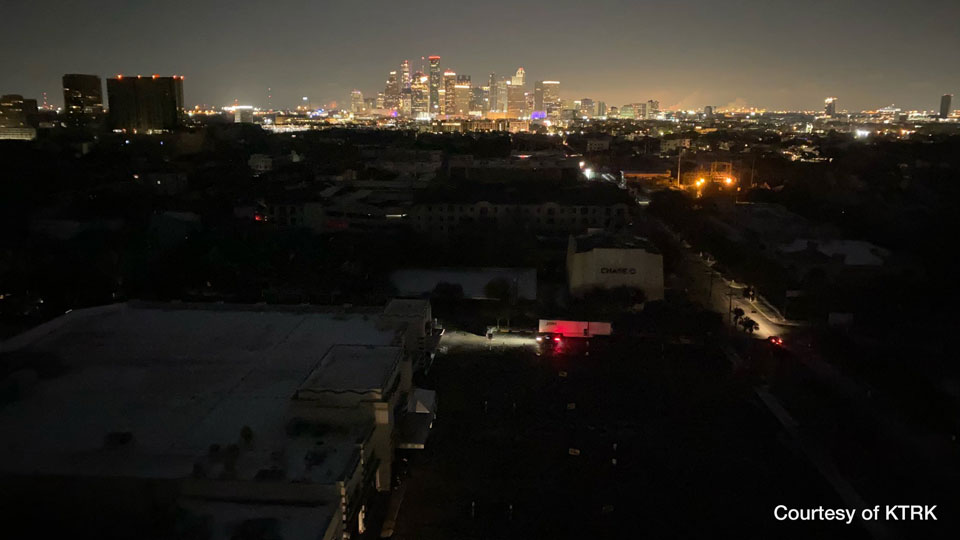
While most people imagine deserts and sweltering heat when they think of Texas, this was not the first time the state has experienced widespread blackouts due to extreme cold. Just 10 years earlier, in 2011, a massive winter storm left millions of people without power. In the aftermath of that disaster, a public commission was formed to investigate the cause of the blackout and recommend preventive measures to protect against similar outages.
The commission released a detailed series of recommendations, from weatherizing plants for cold conditions to increasing on-site fuel storage. But the proposals were largely ignored; they were expensive, and the chances of another massive winter storm in the near future seemed unlikely to energy companies and state regulators.
While extreme weather is, by definition, rare, formerly "extreme" weather events are occurring with ever-increasing frequency as greenhouse gas emissions and average global temperatures continue to rise. In a recent year-end report, climate scientists at NASA's Goddard Institute for Space Studies noted the "events of 2020 are consistent with what models have predicted: extreme climate events are more likely because of greenhouse gas emissions."
As anthropogenic climate change alters weather patterns in foreseeable and unforeseeable ways, can we continue to rely on the United States' vital public infrastructure? How are companies and government regulators in vital sectors like energy adapting as weather events once seen as extreme become more normal?
The Biden administration has introduced a number of policy proposals to rebuild America's crumbling infrastructure and reorient the country toward a greener, more sustainable future.
In one of his first acts in the Oval Office, President Biden signed an executive order to have the US rejoin the Paris climate agreement; back in 2017, the Trump administration announced its withdrawal. While former President Trump and many of his supporters were skeptical or openly hostile to the scientific consensus around anthropogenic climate change, President Biden has doubled down on curbing greenhouse gas pollution at every level of the US economy. Back in April, he announced a new, more ambitious target to achieve a 50-52% reduction in emissions from 2005 levels, as well as creating a carbon pollution-free power sector by 2035.
One of the most aggressive proposals to reach these targets is a colossal infrastructure spending bill called the American Jobs Plan. The original proposal called for $2.3 trillion dollars in spending to improve, repair, or reimagine the United States' infrastructure, from rebuilding roads and bridges to massively expanding broadband access and modernizing the national electric grid. Using the Texas power crisis as an example of failed infrastructure, the policy outline proposes spending $100 billion to build at least 20 gigawatts of new, high-capacity transmission lines, cap orphaned oil and gas wells, and invest in new green technologies like hydrogen generators and carbon capture. The plan is wide-ranging and ambitious, expanding the idea of infrastructure to cover nearly every aspect of the economy and people's relationship to it.
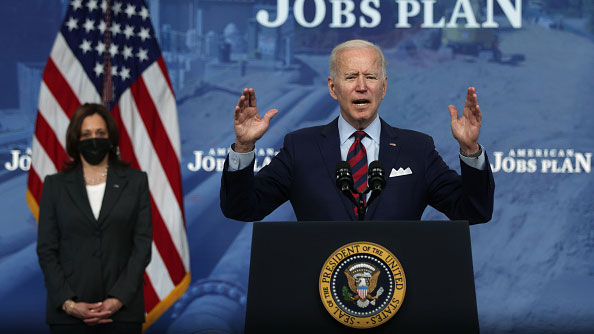
Republicans, however, have come out in strong opposition to the plan. Balking at the proposed tax increases, high price tag, and policy focus, Senate Republicans, led by Shelley Moore Capito of West Virginia, released their own $928 billion infrastructure proposal at the end of May. This counteroffer greatly reduced the scope of Biden's plan and eliminated nearly all the administration's goals related to climate change, like basic research in green energy or building a nationwide EV charging network.
On June 8, White House officials announced they were stopping all further negotiations with Capito's group and would instead try to create a different bipartisan coalition with other moderate Republicans. There have been no updates about these new talks, but it seems likely any Republican negotiators will demand a proposal with a narrower focus, lower price tag, and no tax increases. Any such plan would simply reflect conservatives' continued skepticism of human-generated climate change. And so far, President Biden and Senate Democrats seem unwilling to push the original bill through Congress using budget reconciliation.
Some private companies, however, are already taking steps to address climate change by adopting innovative technologies and modernizing their systems, regardless of federal policy changes.
Duke Energy, one of the largest power companies in the US, has spent billions of dollars hardening its grids, improving reliability, and investing in more sustainable technology. In Florida alone, the company has invested billions of dollars to protect their customers in the face of more frequent and more powerful storms.
After Hurricane Michael destroyed miles of transmission lines in coastal areas throughout the state, Duke Energy replaced all the fallen lattice towers with "monopoles," which it found to be more structurally stable under hurricane-force winds. The company has also been quickly adopting "smartgrid" technologies to improve reliability, like automatic circuit reclosers that can instantly detect interruptions in a line and automatically reroute power through an alternative path, limiting an outage to a smaller geographical area.
According to Ana Gibbs, a senior communications consultant for the company, this technology already covers nearly 35% of customers in Florida, and in 2020 alone prevented over 19 million hours of outage time. Duke Energy is also building utility-scale solar installations throughout the state, giving it extra generating capacity and flexibility. With all the new capacity coming online, the company plans to retire its last two coal-fired plants by 2034 — eight years ahead of schedule.
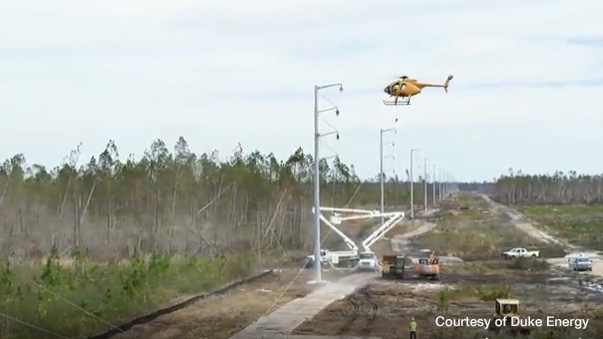
So, where do we go from here? There are bright spots in this story. The total share of carbon-free energy generation in the US is quickly increasing. This year during CERAWeek, a major annual energy conference, it seemed as though all the CEOs of major energy companies were touting their investment into developing next-generation green tech like hydrogen or e-fuels. The $100 billion for electrical grid modernization in the American Jobs Act is a great start, but experts warn that much more investment could be necessary.
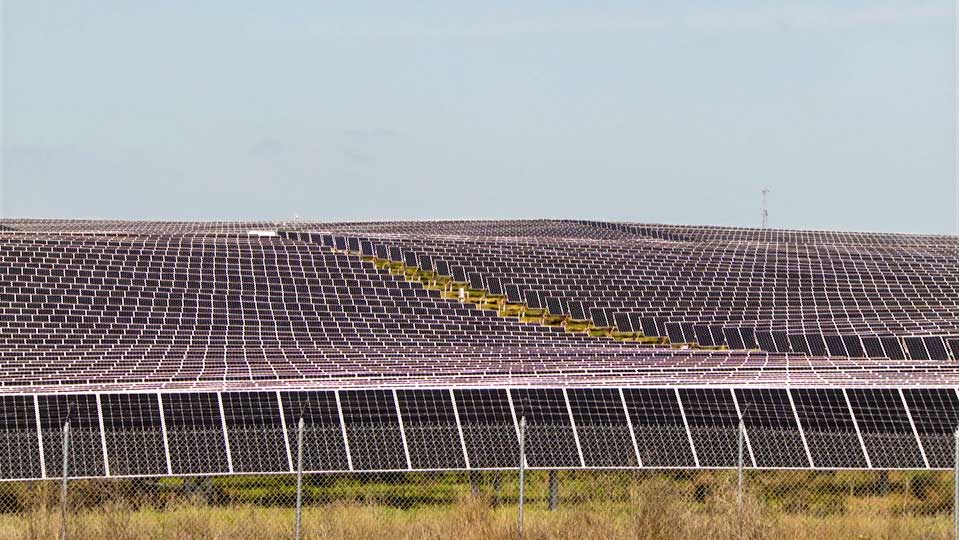
In a recent interview, Dr. Joshua Rhodes, a postdoctoral researcher with the Webber Energy Group at the University of Texas-Austin, told me that "we need to spend trillions of dollars just to keep things the way they are, not even taking into account what it takes to meet a changing and more dynamic future."
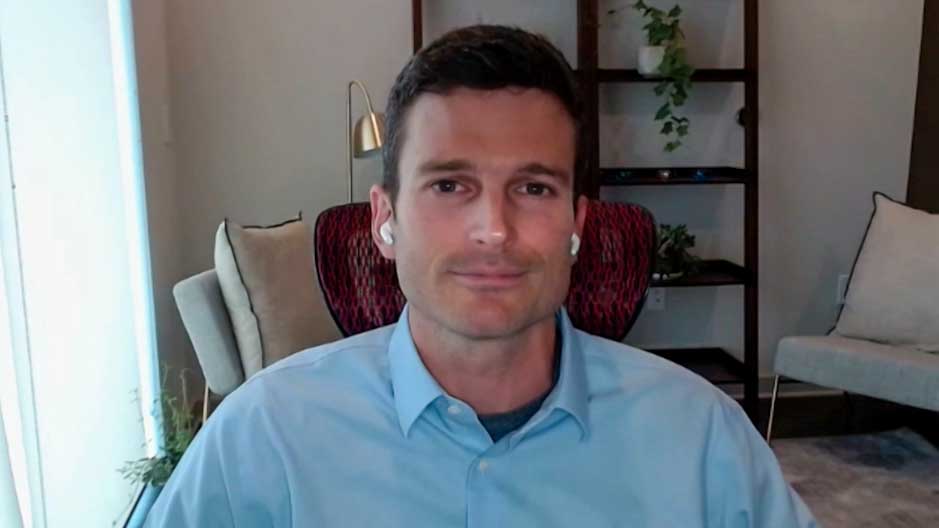
But much work remains to be done. The economic cost of America's aging, polluting, and crumbling infrastructure is staggering, and will only increase as the effects of climate change become more pronounced. Early estimates indicate the direct and indirect costs of the winter storms and blackouts in Texas alone could be as high as $130 billion.
The human cost of inaction is also enormous. According to the Texas Department of State Health Services, the death toll from February's storms stands at 151. The most common contributing cause of death was hypothermia. We can never fully eliminate risk from natural disasters and extreme weather, but hopefully we can build better, more reliable public infrastructure that will prevent children in the US' most energy-rich state from freezing to death during a winter storm. Whether political and corporate leaders will aggressively fight for necessary changes, however, remains to be seen.
